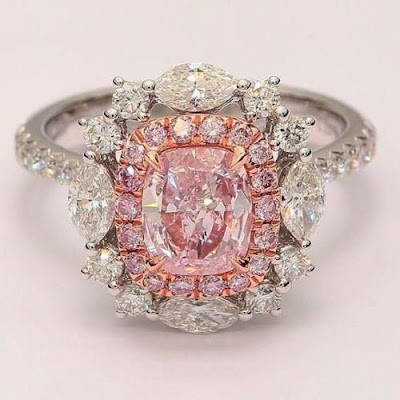The discussion was about man-made diamonds. My ears perked up, and I started to listen intently. A diamond is just a lump of coal that did well under pressure. Exactly what kind of pressure, and in what conditions, lie at the center of a debate that has divided and disrupted the sparkling world of exceptional jewelry.
Recent sales of authentic pink diamonds at auction have been making international news. A 19-carat emerald-cut pink stone was sold to the Harry Winston house in New York in 2018. The Winston Pink Legacy fetched more than $50 million and currently holds the reigning world record for price per carat. The stone is a strong investment for Harry Winston, he added, "Ten years from now, this diamond could be worth $100 million." But the mine that supplies ninety percent of the world's pink diamonds will cease production later this year, and savvy collectors are sure to snap them up. Then what?
Technology has evolved so rapidly over the past five years, the industry has witnessed a boom in lab-grown diamonds – gemstones that are chemically and aesthetically identical to those found at the bottom of the Earth, yet can be produced in a matter of months. And with a younger, more ethically conscious generation coming of diamond-buying age, many argue that a lab is the best way of providing the world with its favorite gemstone.
Also known as engineered or cultured diamonds, they are grown in highly controlled laboratory environments using advanced technological processes that duplicate the conditions under which diamonds naturally develop when they form in the mantle beneath the Earth's crust. These man-made diamonds consist of actual carbon atoms arranged in the characteristic diamond crystal structure. Since they are made of the same material as natural diamonds, they exhibit the same optical and chemical properties.
While white diamonds are pure carbon, baked to crystalline perfection through a combination of extreme heat and pressure, other shades are caused by impurities in the stone's molecular structure. Boron turns diamonds blue, nitrogen adds traces of yellow — but nobody knows exactly what makes a diamond blush. Pinks — which can be salmon-colored, violet-tinged, or pure bubble gum, like the Pink Legacy — are more common than reds, but still, they consistently rank among the world's most desirable gems. Argyle diamonds are known as the gold standard for pinks, according to the jewelry specialist at Sotheby's. Argyle pink diamonds have a more complicated structure than white diamonds and can take three to four times as long to polish.
In recent years, pink diamonds have become a micro-trend among gem-flaunting celebrities, including former tennis pro Anna Kournikova, who sports an 11-carat pear-shaped sweet-pink diamond engagement ring from husband, Enrique Iglesias. Actress Blake Lively also wears a pale, 12-carat oval-cut pink engagement ring, and Victoria Beckham has one too, in a peachy-pink oval stone.
For jewelers old and new, lab-grown diamonds remain uncharted territory. On the one hand, it presents a new medium that is chemically the same as mined diamonds, available ethically, and at a much more accessible price point. On the other, it could dilute the aura of luxury and rarity that so many jewelers trade on.
Pink diamonds come in all different shades, and just like other colored diamonds, they can be graded faint, very light, light, fancy light, fancy intense, fancy deep and fancy vivid. The more intense the color of the diamond, the higher the price of the diamond. Therefore, a natural pink diamond that is a vibrant and pure pink color, thus graded Fancy Vivid Pink, is exponentially more expensive than a Fancy Light Pink or Fancy Pink diamond.
Pink diamonds often come with a secondary hue, which can be described as purple-pink or orange-pink. Because of this, you'll never find a pink diamond that looks the same.
Due to their extraordinary rarity, spectacular color, and legacy of significance, I am sure the prices for those still circulating will continue to rise. But will they become lab-grown as well? Working with synthetic diamonds provides an opportunity to speak to a younger audience at a more accessible level. Synthetic stones could act as a more democratic platform for fine jewelry, just as diffusion lines or high-street collaborations can for high-end fashion designers.
As beautiful as they are, a lab-grown diamond is coming in as an alternative for people to make up their own minds about. And as a passion for the pink diamond swelters, savvy buyers will continue to buy pieces they absolutely love one way or another... xoxo-Sonya









0 comments